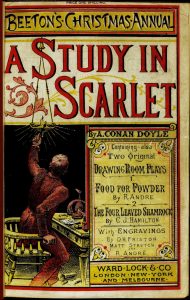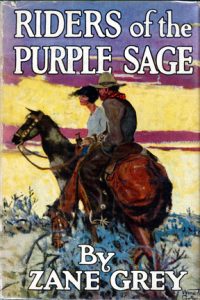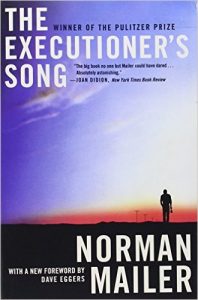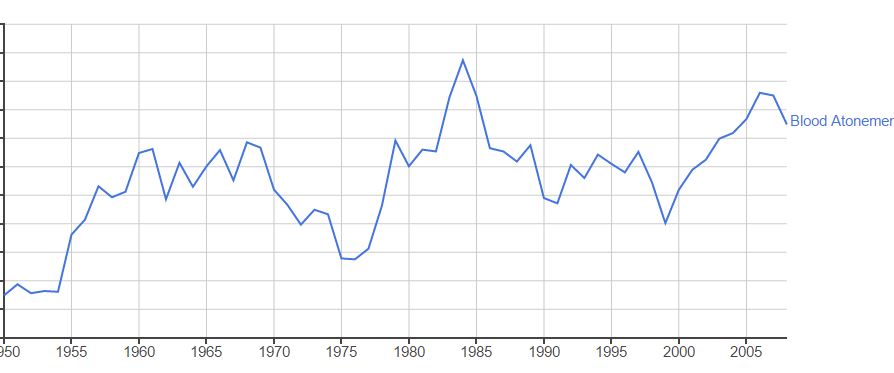Back to Mormonism. Why shouldn’t somebody be able to shoot somebody else because their freedom of religion says that God has spoken to them and that they can shoot somebody dead.”
—Libertarian Presidential Candidate Gary Johnson
Gary Johnson raised more than a few eyebrows two weeks ago when he used Mormonism as an example of the limits of religious freedom—seeming to suggest that Mormons wanted to shoot people because God said it was OK. In a follow-up published in the Deseret News, Johnson walked his comment pack partially, and not entirely convincingly, by stating that he “cited the experience of Mormons as a case-in-point where religious persecution resulted in violent episodes right here in America.”
Whether Johnson was really saying that Mormons shoot people in the name of God, or that other people shoot Mormons in the name of God (or even that God shoots people in the name of Mormons), is really anyone’s guess. Either way, though, it is telling that a presidential candidate in 2016 who wants to make a point about violence committed in the name of religion immediately thinks about Mormons. This is, I would like to argue, is a fundamentally a literary problem.
Johnson’s equation of Mormonism and violence reflects the dominant paradigm for portraying Mormonism in the literature of the English speaking world. The roots of this paradigm stretch back to the nineteenth century, when, for a time, Mormons really were at a state of low-level war with much of the United States. Mormons had the misfortune of starting a new and controversial religion at the precise time that Americans were inventing dime novels and other forms of inexpensive, intellectually unchallenging literature. Mormonism and bad literature grew up together, and they have remained close ever since.
Though Mormons and the rest of the country have been at peace for years, images of violent, frontier Mormons and their equally violent descendants still dominate several common literary genres, three of which– the series mystery, the Western romance, and the true-crime novel–have Mormonism embedded in their literary DNA. Let’s look at some foundational texts.
Series Mystery: Arthur Conan Doyle, A Study in Scarlet (1887)
Arthur Conan Doyle’s Sherlock Holmes was the first fictional detective to appear in a series of novels and short stories. If not the absolute first literary detective (we an always cite Poe’s Dupin as a predacessor) he was by far the most famous. And the very first  appearance of Sherlock Holmes in a work of imaginative fiction—the novel A Study in Scarlet—had rather a lot to do with the Mormons.
appearance of Sherlock Holmes in a work of imaginative fiction—the novel A Study in Scarlet—had rather a lot to do with the Mormons.
A Study in Scarlet begins in London, where a man has been found poisoned, with the German word rache (revenge) written in blood on the wall. Through his extraordinary detecting skills, Holmes traces the murdered man back to the United States, and then the narrator takes over to tell a lengthy backstory involving Utah, Mormonism, Danites, forced marriage, betrayal, and murder—story elements well known to readers of dime novels and curiously similar to Robert Louis Stevenson’s story, “The Destroying Angels” published two years earlier in his collection, The Dynamiter.
As the series mystery developed into a formidable literary genre, something amazing happened: the essence of Conan Doyle’s Mormons traveled a hundred years in the future to inhabit the bodies of literary characters in the 1980s. Dozens of mystery novels in the 1980s and 1990s portrayed late-20th century Mormons in corporate settings doing exactly the same things that the Mormons A Study in Scarlet did in 1887: killing dissidents, practicing blood atonement, forcing women into polygamy, and tracking people to the ends of the earth for revenge.
These novels included series by Robert Irvine, Gary Stewart, J.R. Levitt, and John Gates, as well as single novels in popular series by (among others) Tony Hillerman, Karen Kijewski, Rex Burns, Kathy Hogan Trocheck, Dianne Day, and Sarah Andrews.[1] These mystery tropes continue today, though at a slower rate and mitigated by the more complex portrayals of Mormon detectives in the work of writers like Mette Harrison and Andrew Hunt. But even in 2016, a Martian anthropologist who relied solely on series mystery novels to understand Mormonism would probably conclude that little has changed about Mormons in the past 150 beyond our habits of dress and grooming.
Western Romance: Zane Grey, Riders of the Purple Sage (1912)
Riders of the Purple Sage was not the first Western romance, the first Western romance to feature Mormons, or even the first Western romance by Zane Grey to feature Mormons. His Heritage of the Desert, which casts Mormons in a much more positive light, appeared two  years earlier in 1910. But Riders of the Purple Sage was an important book that became the genre’s first runaway bestseller and created the formula that still govern’s Western novels today.
years earlier in 1910. But Riders of the Purple Sage was an important book that became the genre’s first runaway bestseller and created the formula that still govern’s Western novels today.
Riders of the Purple Sage starts with a narrative very similar to that of A Study in Scarlet: a strong and independent Mormon woman is pressured to become the polygamous wife of a prominent Mormon Elder—and to abandon the handsome gentile that she loves. In A Study in Scarlet, the handsome gentile fails and the story becomes a revenge plot. In Riders of the Purple Sage, the gentile prevails, taking on the entire Mormon society and riding away with the girl. In the process, Lassiter (no first name) becomes the standard protagonist of Western literature: a rugged individualist governed by his own moral code who takes on the most powerful forces in his society and wins, usually because he is also really good at shooting people.
In the 1920s, 30s, and 40s, this formula grew to become the dominant genre of American literature—ensuring that the dime novel Westerns of the previous century would live on in bestselling hardbacks. And, like the series mystery, its Mormon roots were always part of the genre. Since most 20th century Westerns were set in the nineteenth century, it was easy to populate them with nineteenth-century characters—which meant that the dime-novel contemporary Mormons could be transplanted directly into 20th century Westerns with titles like The Fighting Danites. While the popularity of the hardback Western genre has diminished substantially since the 1950s, its enormous popularity at midcentury played an important role in keeping the 19th century’s Mormon tropes alive for generations of readers.
True Crime: Norman Mailer, The Executioner’s Song (1979)
The true crime book (sometimes called the “true crime novel”) is a fusion of journalism and storytelling that emerged in the 1960s with Truman Capote’s In Cold Blood and went on to become one of  the most popular genres of popular literature in the United States. According to most critics, true crime solidified as a genre in 1979, with the publication of Norman Mailer’s Pulitzer-Prize winning novel, The Executioner’s Song—the story of Gary Gilmore, the Utah Mormon who murdered two men in 1976 and was executed in January of 1977 after refusing to appeal his sentence.
the most popular genres of popular literature in the United States. According to most critics, true crime solidified as a genre in 1979, with the publication of Norman Mailer’s Pulitzer-Prize winning novel, The Executioner’s Song—the story of Gary Gilmore, the Utah Mormon who murdered two men in 1976 and was executed in January of 1977 after refusing to appeal his sentence.
There were two things about the Gary Gilmore story that stood out for Mailer and for most readers. First, he was the first person executed in the United States after the Supreme Court’s Gregg v. Georgia decision (1976) ended the de-facto moratorium on executions imposed by the Furman v. Georgia decision in 1972. The first post-Furman execution was supposed to be a major legal battle, with appeals going all the way up to the Supreme Court. But Gilmore refused to appeal and fired any attorney who tried to do it for him. He seemed to want to die–which leads us to the second thing. According to some accounts, Gilmore wanted to die by the unusual mechanism of the firing squad because, as a Mormon, be believed that he had to shed his blood on the ground to atone for his sins. Blood atonement.
In many ways, The Executioner’s Song introduced American fiction readers to Mormonism after nearly a century of mainly historical works hearkening back to the nineteenth century. Regrettably, the first major novel about contemporary Mormons injected one of the most toxic tropes of the 19th century back into the literary mainstream. And the true-crime genre continued to developed at a time when actual Mormons were committing spectacular crimes in numbers far exceeding their demographic representation. Early true crime novels dealt with the Mark Hoffman killings, the Ervil LeBarron murders, the Singer-Swapp standoff, and a number of other spectacular crimes by Mormons and Mormon fundamentalists.
And blood atonement was everywhere—even in books that had nothing to do with Mormonism, such as Shana Alexander’s Nutcracker, which takes place among prominent Salt Lake City Episcopalians. Apparently, just living in Utah caused people to commit blood atonement out of instinct. Pete Earley’s 1993 true crime book Prophet of Death: the Mormon Blood Atonement Killings deals with a break-off of the Reorganized LDS Church (now the Community of Christ) for whom “blood atonement” was not even a thing. The following Google N-Gram shows the significant spike that occurred in books mentioning “blood atonement” immediately following the publication of The Executioner’s Song in 1979.
As the graph shows, portrayals of blood atonement (and the nineteenth-century Mormon stereotypes that go with it) have spiked again in the 21 century–largely due to books like Jon Krakauer’s Under the Banner of Heaven (2004), probably the bestselling Mormon-themed book of the last 20 years. And this is not necessarily motivated by hostility towards Mormons. All three of these literary genres require certain kinds of bad guys in order to work: murder mysteries require murderers, true crime books require true crimes, and Westerns require powerful nineteenth century oppressors who live in the West. These narrative requirements, when combined with the historical connection of Mormonism to these genres, make it very easy for writers to continue the stereotypes.
This is something that Latter-day Saints need to understand. When somebody like Gary Johnson associates Mormons with religious violence, he is not reaching into the past for obscure historical examples; rather, he is accessing cultural constructs that are as much a part of American literature today as they were in 1870. For all of the efforts that the LDS Church has made to portray itself as safe and normal, Mormonism remains somewhat mysterious to large numbers of people and easily definable by tropes and stereotypes that have been characteristic of genre literature for more than 150 years.
1] In a 1997 Sunstone article I did my best to catalog and analyze the “Mormon murder mysteries” of the 80s and 90s and to provide an annotated bibliography thereof.


I was first introduced to “A Study in Scarlet” as an undergrad at Utah State. We were studying Orientalism and the prof wanted to show our mostly Mormon class how Mormons were in a sense “orientalized” in the 19th century, made in something exotic and dangerous and Other. His point was, it isn’t too fun when you are on the receiving end, is it? It got our attention.
Thanks for sharing this. Your knowledge of literature is dizzying.
The only time I’ve ever actually seen Mormons display their Danite bloodlust was Church basketball. 🙂
Seriously, though — one of the salient points I’ve gleaned from both your and Terryl Givens’ work is that Mormon Otherness is so alien to mainstream Americans that they feel completely feel free to assign any and all _other_ out-group imagined characteristics to us: Arab orientalism, Popish Catholicism, etc.
Some of that may be malice, some of it the requirements of sensational fiction, but much of it is that if they were to actually try to accurately portray our true Otherness, they would have portray us as we really are, and there’s very little inherent fictive menace in green Jell-O (Jaleta Cregg, not withstanding). Worse, they’d have to take our claims about ourselves at face value.
The irony being that what we really are is far more dangerous than fictional Danites could ever be: nothing could be more terrifying, more disruptive to the current cultural zeitgeist than a people who truly do receive continual revelation from a God who really does exist.
Lee’s comment reminds me of the many ways that people seem to assume Mormons = Amish. Of course, the details of someone’s religious beliefs are always less important to outsiders. But the fact that people seem to so easily make that equation (and used to do it for Quakers) underscores that point that once Mormons are seen as exotic, that exotic element seems to provide loose permission to blur the lines with other exotic religious groups.
Worse, I think, are the stories that try to sell an underlying narrative of Mormonism as specifically linked to violence (or perhaps of religion as linked to violence and Mormonism simply as one of the more clear examples of this). Mormons = Muslims?
Jonathan:
This is a bit of a chicken-and-egg thing, but one of the largest modern perpetrators of Mormons = Amish is that when the Harrison Ford film The Witness got subtitled for the European market, Amish was translated as Mormon in the subtitles.
——
I never thought about that in this way: “As the series mystery developed into a formidable literary genre, something amazing happened: the essence of Conan Doyle’s Mormons traveled a hundred years in the future to inhabit the bodies of literary characters in the 1980s.” Amazing time traveling tropes!
The Mormons-as-Amish (or perhaps Mormons-as-Quakery-Amish) meme appeared in the 1970s MY NAME IS TRINITY film series. Also, iirc, THE DUCHESS AND THE DIRTWATER FOX.
On the other side of the spectrum, there was that 1995 made-for-TV Danite movie THE AVENGING ANGEL.
I read Study in Scarlet before I read others of Conan Doyle’s works. It put me off, but not entirely…..I could see the appeal of the fantastical and the mysterious in how the rest of the world viewed the frontier Mormons. When you consider the blood shed over nearly every religion’s establishment, we’re not that special. But the fact we basically left the u.s. and headed for a place where we could be remote for a bit….and the fact that pioneers had to use Mormon colonies as stopping places on the way west….and the very real events in Cedar in the mid 1850s….
Yeah. An interesting part of our history, by all accounts.
I have thought that Doyle’s treatment of Mormons in A Study in Scarlet contrasts interestingly with his treatment of Masons in The Valley of Fear, where he is careful to point out that although the “Society of Freemen” (clearly based on the Masons) in this one location has essentially become a criminal enterprise ruling by terror, this is the exception. I like to think that Doyle (who later came to a better opinion of Mormons and I believe apologized for the depiction in A Study in Scarlet) had learned a lesson about not broadly generalizing about an entire group of people. (The Valley of Fear is also a considerably better work of fiction, in my opinion, even though Holmes plays only a peripheral role in the story.)